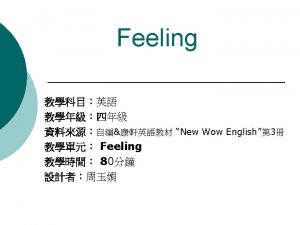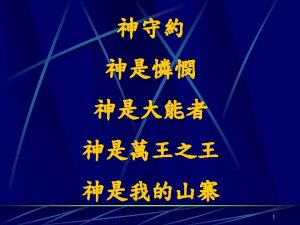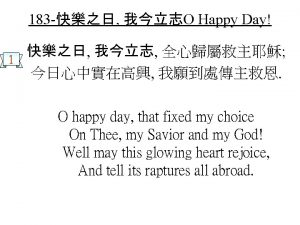Happy Pi Day Todays plan Procure pi with









- Slides: 9

π Happy Pi Day!

Today’s plan! Procure pi with plates! Perfectly perform a pi puzzle! Polish off pieces of pie! Pi pronunciation playoffs!

What exactly is pi? Long, long ago, pretty much everywhere, someone noticed something about circles… When they measured the edge of the circle, it was always about 3 times longer than the width of the circle (but just a little more than 3 times). circumference diameter ÷ = π It turns out it’s really difficult to figure out exactly what this number is. We’re going to try and derive pi ourselves with some measurements!

How to find π! Choose a round object. Wrap a string or pipe cleaner around the edge of it. Measure how long the circumference is. Now measure across the widest part of the circle. That’s the diameter. Divide the circumference by the diameter. Was it close to 3? Write your answer on the board!

How many diameters fit along the edge of a circle? There are π diameters in the circumference.

How close did other people get to measuring this mystery number? Pretty close! Here are 4 ideas: The Babylonians (4, 000 years ago) thought it was 3 1/8. 3 1/ 8 ? √ 10 ? The Egyptians (1650 BC) thought it was √ 10. Is that closer than the Babylonians? Archimedes (250 BC) showed that π must 1/ to 3 3 7 be between 3 1/7 and 3 10/71. Was he right? 10 /71 ? Zu Chongzhi (450 AD) calculated pi to be 355/ 113 — did he get closer? 355/ 113 ?

But why do we call it “pi”? When European mathematicians began using variables in the 1600 s, some Greek letters were used as well. William Jones in 1707 was the first to use π as a symbol meaning “the ratio of a circle’s circumference to its diameter. ” He chose π because it was the first letter of the Greek word for “perimeter. ” In English we pronounce that “pi” (although in Greek it’s pronounced “P”). This is important because it shows that Jones knew that this was no ordinary number. It couldn’t be represented by a fraction! It was irrational and its decimal never ends.

What about all those digits? That’s just an approximation of pi! The digits will never end, but they’ll never repeat. Each progressive digit adds a tiny little bit to the total value. Here are the first 100: 3. 141592653589793238462643383279502 88419716939937510582097494459230781 64062862089986280342113428570679…


















